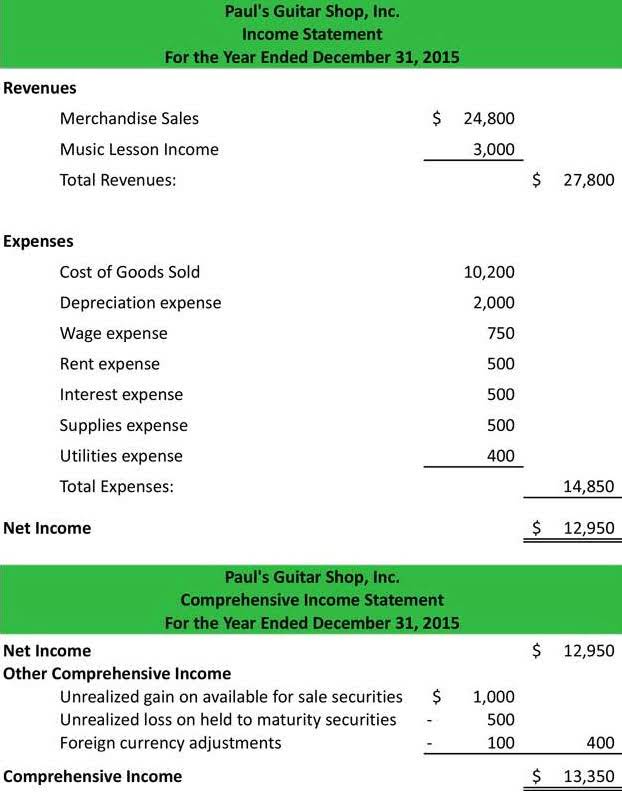Horizontal Analysis Formula + Calculator
Analyzing operating cash flow trends over time can reveal how effectively the company manages its day-to-day cash flow and whether it is self-sustaining. By comparing revenue, operating expenses, and net income over time, you can measure growth and efficiency. The two examples below show how to do horizontal analysis using Google Sheets, but you can easily do the same in Excel.
Horizontal or trend analysis of financial statements
In order to calculate the absolute change, subtract the figure from the earlier period from the figure from the later period. In the event that revenue was Rs. 100,000 in 2019 and Rs. 150,000 in 2020, the absolute change is Rs. 50,000; that is, Rs. 150,000 – Rs. 100,000. Analysts are interested in observing positive trends and enhanced profit margins.
- This will allow you to interpret these results within as comprehensive a context as possible.
- Horizontal analysis allows for the comparison of financial data over time, highlighting trends, patterns, and changes in performance.
- By comparing revenue, operating expenses, and net income over time, you can measure growth and efficiency.
- Although it is beneficial for monitoring historical trends, it does not offer any predictions regarding future outcomes.
- By looking at past performance, it can help assess growth rates, spot trends (by comparing changes from period to period), generate forecasts, or project the insights gained into the future.
- From 2021 to 2020, we’ll take the comparison year (2021) and subtract the corresponding amount recorded in the base year (2020).
Income Statement and Balance Sheet Assumptions
For example, unearned revenue net income could fall sharply in year 2, despite a rise in sales, due to a marked rise in the cost of goods sold, marketing expenses, administrative expenses, and/or depreciation expenses. Horizontal analysis involves looking at Financial Statements over time in order to spot trends and changes. This can be useful in identifying areas of concern for a business, as well as improving the performance of companies that are struggling. When Financial Statements are released, it is important to compare numbers from different periods in order to spot trends and changes over time.
Is there any other context you can provide?
While the horizontal analysis can be performed on each statement in isolation, it is always better to analyse both balance sheet and income statements together to avoid drawing the wrong conclusions about the performance of a business. Horizontal analysis is a vital tool in the arsenal of financial analysts, offering a dynamic view of a company's financial health over time. By providing insights into trends, growth rates, and performance metrics, this technique supports more informed and strategic decision-making. While it should be used in conjunction with other analytical methods, horizontal analysis remains a cornerstone of thorough financial analysis. With a solid understanding of horizontal analysis applied to income statements and balance sheets, you’ll be well-prepared to make informed financial assessments and decisions. This example showcases how horizontal analysis of income statements can provide actionable insights into a company’s financial performance and guide decision-making.
Example: Horizontal Analysis of an Income Statement
Discover the best Excel stock add-in for stock fundamentals and live data to simplify and enhance your analysis process. The base year can be any period you choose; typically, this is year to year, quarter to quarter, or past trailing twelve months. Insert a column to the right of ‘2022’ and click on the cell corresponding to the first line item. Google Sheets offers plenty of Data Analysis features that we can use to make sense of large data sets. Strike offers a free trial along Bookstime with a subscription to help traders and investors make better decisions in the stock market. This suggests a Rs. 30,000 increase in the cost of products sold during the said period.
- The base year can be any period you choose; typically, this is year to year, quarter to quarter, or past trailing twelve months.
- Its importance extends to areas such as strategy development, risk management, and performance evaluation.
- The percentage representation makes it easier to determine the level of change between these different periods.
- Additionally, consider examining the factors that may have contributed to these trends, such as changes in market conditions, company strategy, or industry dynamics.
- For example, clearly the revenue is growing each year, however, the expenses, particularly the sales and marketing expenses are growing more rapidly, resulting in a reduction in the net income and net income % of the business.
- Drag down the cell with the formula to copy it to the other current assets line items.
Mastering these advanced techniques and tools can significantly enhance your ability to extract meaningful insights from financial data and make informed decisions based on your horizontal analysis findings. Expense analysis is equally important when conducting horizontal analysis on income statements. It helps you understand how efficiently a company is managing its costs and whether there are any notable changes in expense categories over time.
- Vertical analysis, ratio analysis, and cash flow analysis are commonly used alongside horizontal analysis to gain a comprehensive understanding of a company's financial position.
- One of the methods used to spot trends and growth patterns in a business over the years is horizontal analysis.
- We will explore how ManufacturingCo, Inc. uses horizontal analysis for internal performance evaluation and regulatory compliance.
- You do not need special financial skills to ascertain the difference between the previous and last year’s data.
The differences between payroll accounting and bookkeeping

Platforms like QuickBooks or SAP offer advanced features and customization options that Grocery Store Accounting cater to the complex needs of larger organizations. Now that we have a comprehensive understanding of accounting, payroll, and bookkeeping, the next step is to determine the most suitable financial management approach for your business. While each component plays a crucial role in managing finances, the optimal strategy will depend on various factors, including the size of your business, industry regulations, and your specific financial goals. In this section, we’ll explore how to choose the right financial management approach by tailoring strategies that align with your business needs.
- Whichever method they choose, employers must ensure their bookkeeping service is compatible with it.
- An error in your financial records can impact your entire operation and knock the business off its game.
- In conclusion, bookkeeping is the cornerstone of financial stability, providing businesses with the tools and insights they need to manage their finances effectively.
- Accounting software tracks all job-related costs, including materials, labor, and subcontractors, helping businesses set accurate project budgets and avoid underpricing their services.
- Construction companies often lose money due to untracked costs, billing errors, and unexpected expenses.
Get 3 months free* when you sign up for payroll processing today.
While the bookkeeper can compile and gather information, the balance sheet and detailed financial statements are produced by those with more experience and education. Another crucial aspect is converting bank statements from PDFs, which can require a high degree of precision due to their complexity and detail. A bookkeeper records the day-to-day financial transactions of their current company.

Company
Bookkeeping is essential to both large organisations and small businesses across all industries and helps with financial activities such as budgeting, forecasting, and tax preparation. Sage 300 CRE is particularly valuable for companies that handle multiple large-scale projects, require in-depth reporting, and need an integrated system for accounting and operations. In the following month, when updating the vacation accrual, you would only record the difference between the current month's balance and the bookkeeping and payroll services previous month's balance. This ensures that the liability is accurately reflected on the balance sheet without double-counting the expense. Accounting encompasses a wide range of activities beyond payroll, including financial planning, analysis, and reporting.

Key Differences Between Bookkeeping And Payroll Management

Prepare and generate payroll reports for internal management and external entities. These reports may include payroll expenses, tax liabilities, and other financial data. Processing payroll involves calculating and managing employee salaries, wages, and other compensation accurately and efficiently. It includes recording work hours, calculating gross pay, factoring in bonuses and commissions, and accounting for overtime. Payroll management services handle employee benefits, such as health insurance, retirement plans, and other voluntary deductions. The payroll department ensures that employees receive accurate and timely payments based on their work hours, salary rates, and applicable deductions or benefits.

- Understanding these differences is vital, especially if you are considering hiring a professional to help with your business finances.
- These expenses must be recorded to comply with the accrual basis of accounting, which is the standard accounting method required by the Generally Accepted Accounting Principles (GAAP).
- CoConstruct is a construction and property management platform designed to help home builders, remodelers, and contractors streamline project finances, bidding, and client communication.
- Unlike accounting, which analyzes these transactions to provide insights into financial performance, bookkeeping focuses on the accurate documentation and categorization of financial data.
- Foundation Software is a construction-specific accounting platform that handles complex payroll, job costing, and financial reporting.
At the end of each month, the company needs to record an accrual for the vacation time that has been earned by employees but not yet taken. The team works with Intuit's Tax and Bookkeeping experts, recruiters, and thought leaders. It provides valuable resources, insights, and opportunities to help people retained earnings achieve their career goals and business ambitions. The Strategy Hour Podcast is a twice weekly show hosted by Abagail Pumphrey and Emylee Williams, the founders of Boss Project.
- Accountants are money-related advisors who create fiscal summaries and provide monetary exhortations.
- We provide our payroll services across Belfast, Birmingham, Bradford, Bristol, Cardiff, Coventry, Edinburgh, Glasgow, Leeds, Leicester, Liverpool, London, Manchester, Nottingham and Sheffield.
- It’s typically handled using software like QuickBooks or Xero or by professional bookkeepers.
- Averages range from less than $100 per month on the low end to thousands of dollars per month on the high end.
- The process includes tracking time, accounting for bonus pay, and making on-time distributions.
From manual payroll processing to sophisticated payroll software, businesses have a myriad of options to choose from based on their unique needs and preferences. While some businesses may opt for traditional methods of calculating payroll using spreadsheets or paper-based systems, others may embrace the efficiency and accuracy offered by cloud-based payroll software. Platforms like ADP or Gusto automate payroll processing, tax calculations, and compliance reporting, streamlining the entire payroll workflow and reducing the risk of errors. It handles automated reporting of taxes, payout to employees, and production of information that entire departments previously held.
Blogging Tips: Insider Secrets Experts Won’t Share for Free
- Bookkeepers manage many of the everyday financial needs of a business, from tracking cash flow and reconciling your accounts to updating your books and creating standard financial reports.
- Maintaining comprehensive and organized payroll records is vital for compliance and reference purposes.
- Spa Booker, our example company, offers its employees 20 days of paid time off (PTO) per year.
- The Strategy Hour Podcast is a twice weekly show hosted by Abagail Pumphrey and Emylee Williams, the founders of Boss Project.
- In this guide, we’ll go over the basics of payroll, bookkeeping and accounting.
- Accountants know this, which is why they jump over numerous hurdles to get to where they are today.
In this final section, let’s recap the main takeaways and discuss how mastering financial management can pave the way for success in today’s dynamic business landscape. Despite the advancements in payroll technology, businesses still encounter challenges when it comes to payroll administration. One common issue is ensuring compliance with ever-changing tax laws and regulations, which can be daunting for businesses of all sizes. From federal tax withholding requirements to state-specific regulations, staying abreast of compliance updates is essential to avoid costly penalties and audits. Moreover, accurately tracking and managing employee benefits, such as health insurance or retirement plans, adds another layer of complexity to payroll administration.
